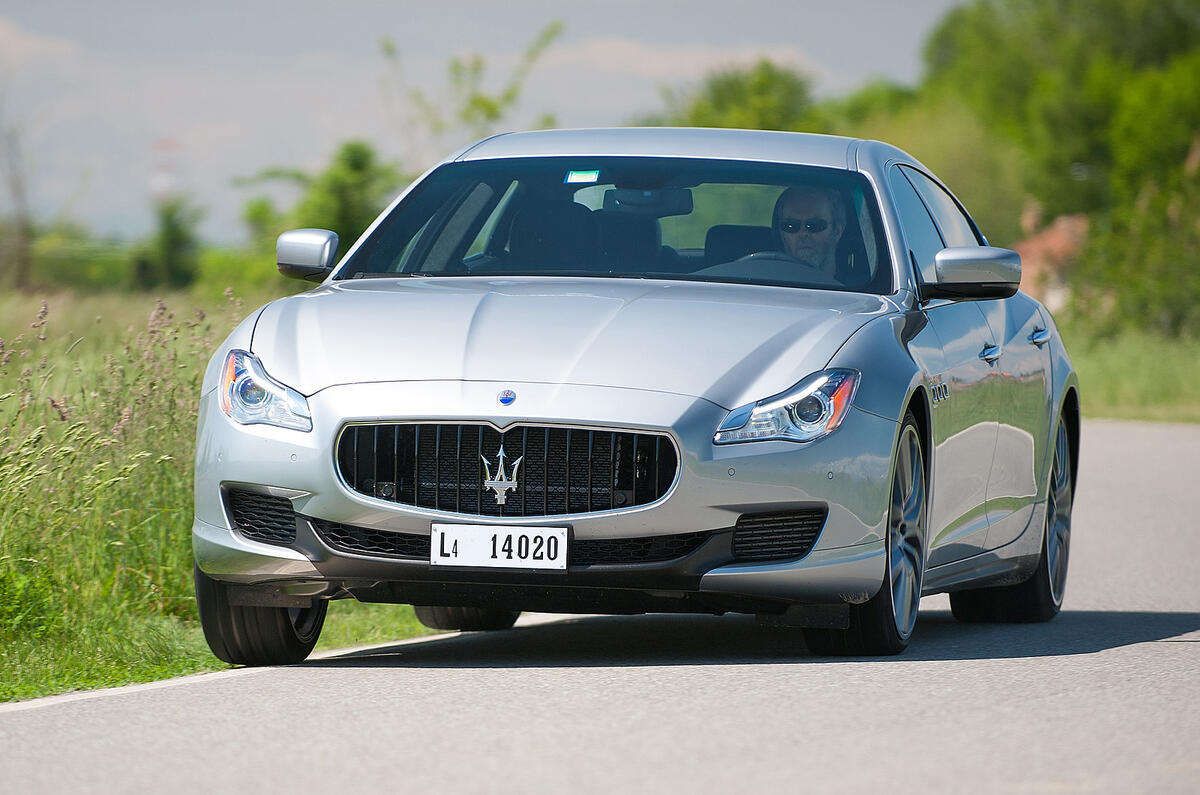
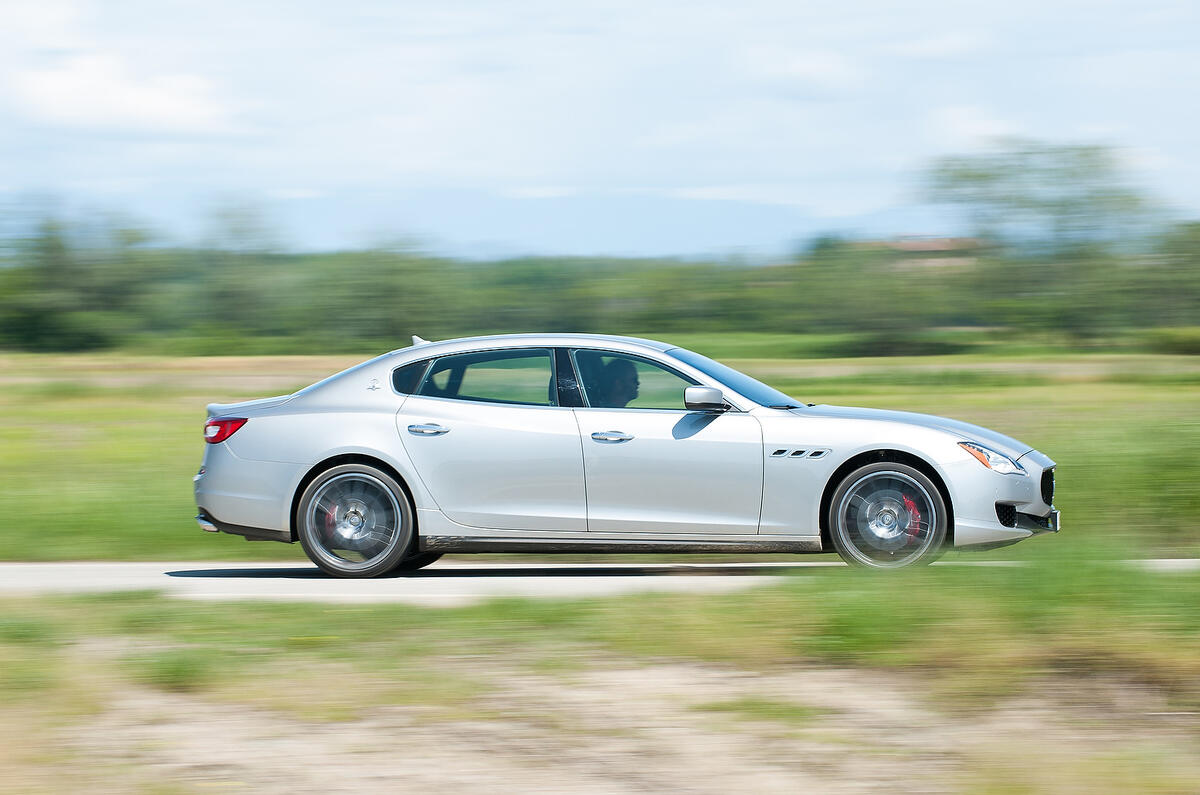
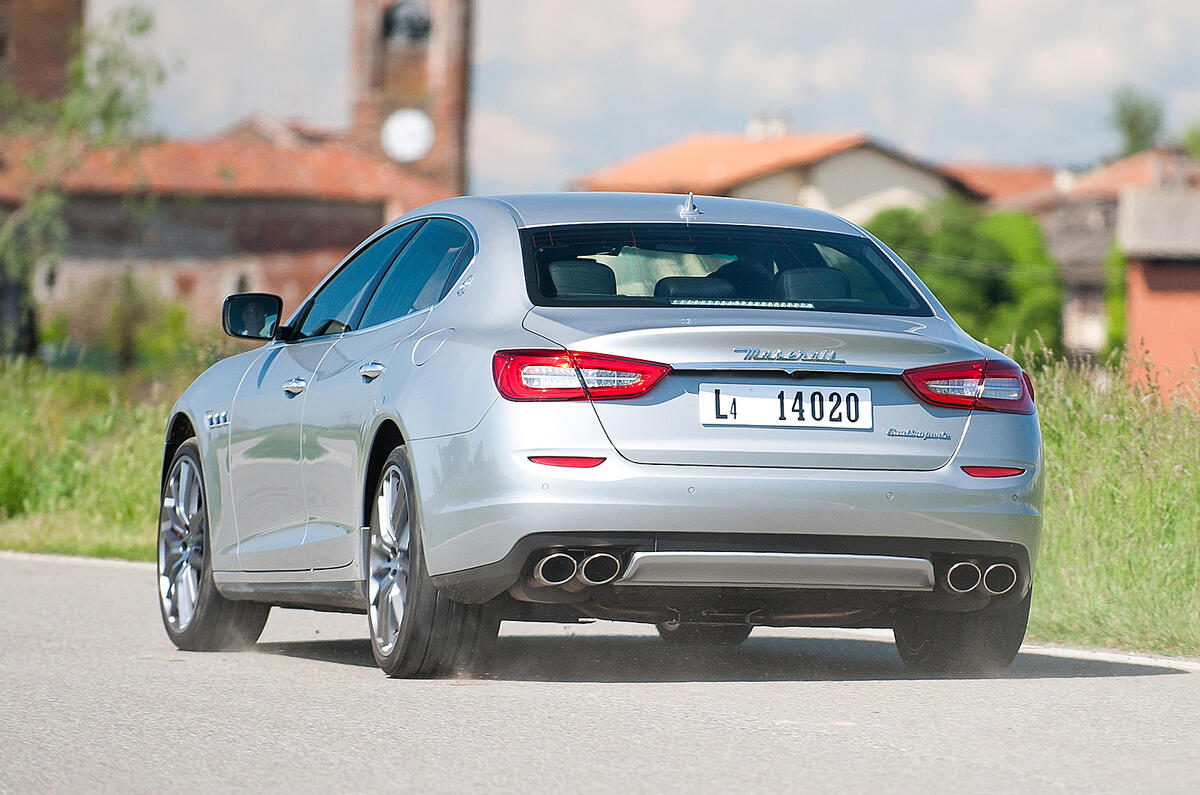
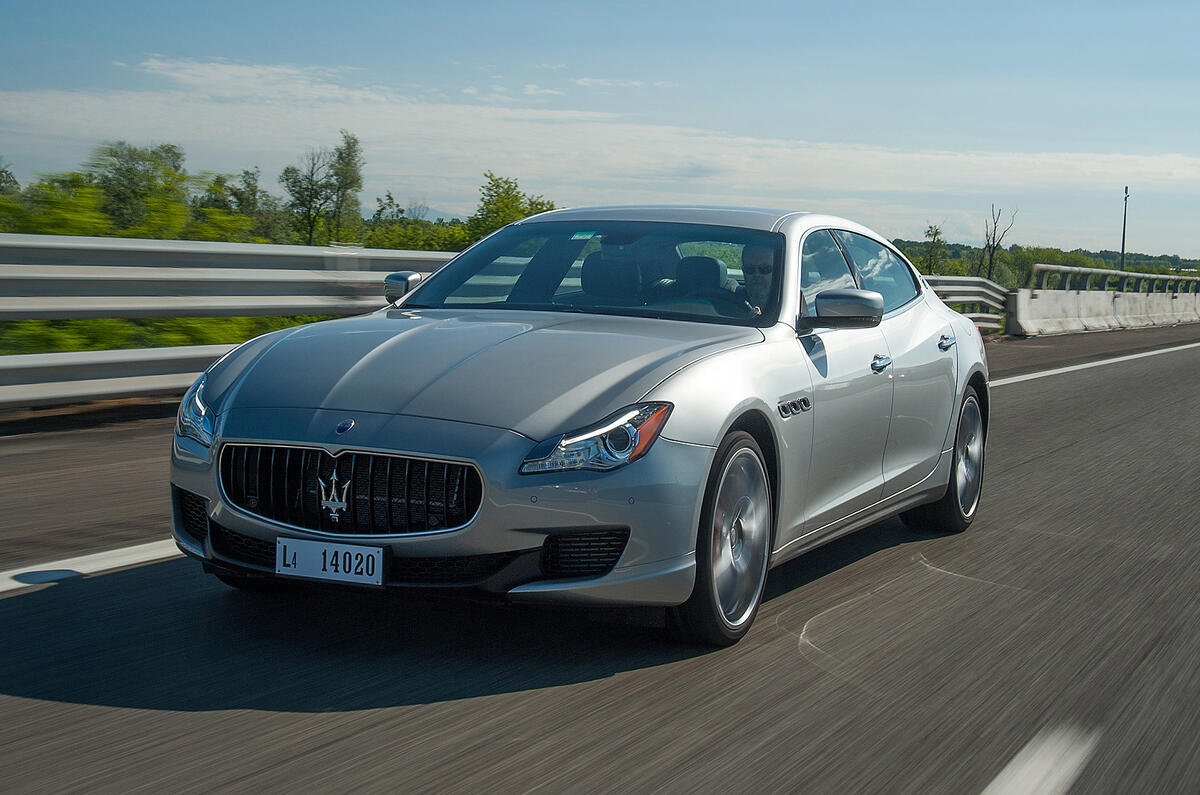
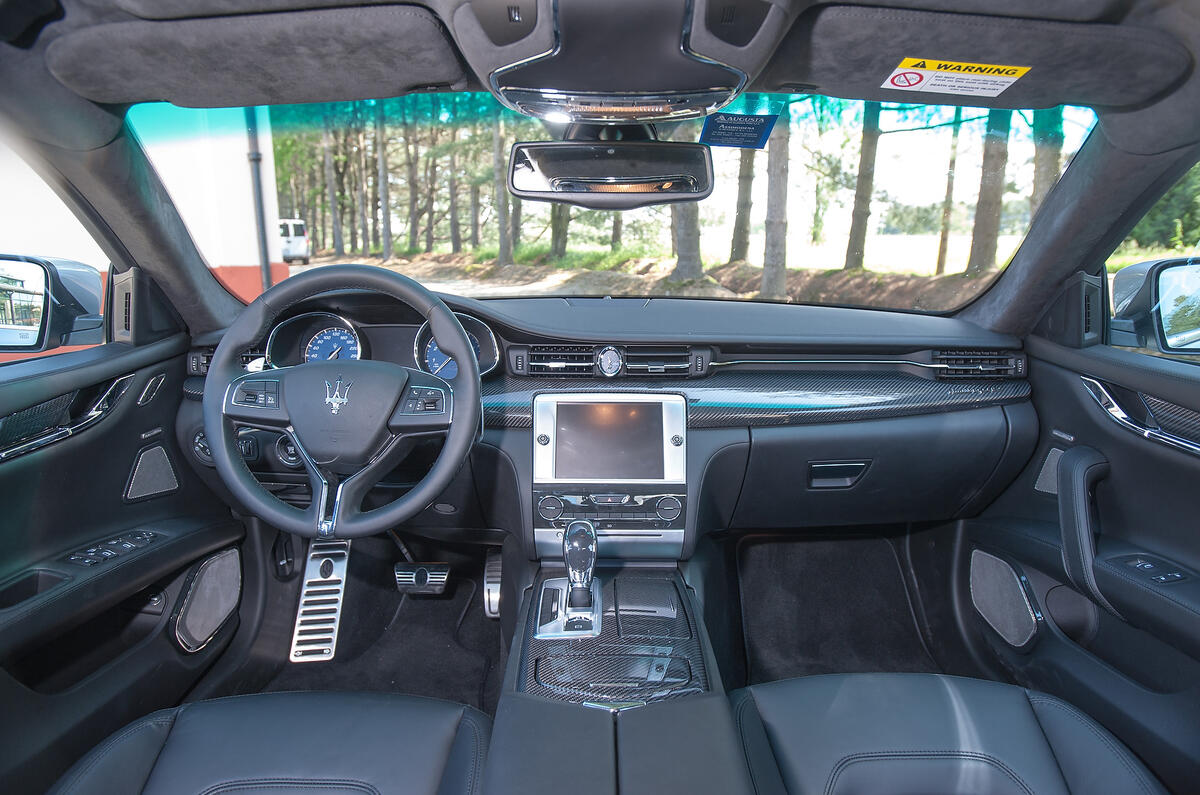
The sixth-generation Quattroporte heralds a new era for Maserati as it strives towards a target of ever-increasing sales targets.
Total orders in 2014 came to 6307, so the fact that nearly 7000 Quattroporte orders were been taken in the first four months of the year came as encouraging news. The Quattroporte's engines and platform are also important because they’ll form the backbone of the Ghibli sports saloon and Levante SUV, expected to become Maserati’s top two sellers ahead of the Quattroporte.
In the UK, the launch line-up consists of the £70,510, 273bhp 3.0 V6 diesel, the £82,750, 408bhp twin-turbo 3.0-litre V6 S petrol and the £115,980, 527bhp twin-turbo 3.8 V8 GTS.
Thanks to a planned assault on the Chinese market (where a detuned, entry-level 326bhp V6 replaces the S), the Quattroporte offers a mammoth 3171mm wheelbase as standard – more than even the LWB Jaguar XJ. And it’s the Jag on which Maserati has set its sights with this car, to which end it must master the tricky formula of high-end comfort combined with a sporting drive.
The Quattroportes have healthy kit as standard with each model available in standard form, GranLusso or GranSport. The standard car comes with swathes of leather, chrome and big alloy wheels, and Maserati's new 8.4in touchscreen infotainment system paired to a premium Harman and Kardon stereo system, although those intent on having the best can opt for a Bowers and Wilkins equivalent.
As for the other two trims, both of which are the only choices for the V8 GTS, they have been styled with different clientele in mind. The GranLusso models have been designed with those looking for more exclusivity in mind, with fashion house Ermenegildo Zegna brought in to style the Quattroporte. Such is their work that the big Maserati not only comes with chrome trim and body colours skirts, 20in alloys and black brake calipers on the outside, but also a bespoke silk interior alongside the polished wood inserts. There is also a powered sunblind, heated rear seats and four-zone climate control thrown into the package.
The GrandSport gives the Quattroporte a sporty edge, with muscular bumpers and gloss black side skirts add for an imposing presence, while the big Maserati gets 21in alloys, sports seats, paddle shifters, a sports steering wheel and red brake calipers.
The Quattroporte's interior fit, finish and ergonomics are a class above its coupé and cabrio stablemates, even if the action of some moving parts can't match German benchmarks. Nevertheless, it's a generous and luxurious space, despite a slight visibility penalty from that sliver-like glasshouse.
Drivers sit medium-high in wide, well bolstered seats, but comfortably so and not to the point of feeling perched, while rear-seat occupants have plenty of room all round, albeit without enjoying the serenity of the Mercedes S-Class’s rear space. The long boot yields a useful 520 litres of luggage space.
Despite the V6's banks making 60deg to the V8's 90deg, the two are closely related. Both are twin-turbo, variable-valve, direct-injection engines built by Ferrari at Maranello to Maserati designs, but the V6 revs lower, produces peak torque from just 1750rpm and is 13 per cent thriftier at 26.9mpg. Both use a ZF eight-speed automatic transmission and have 50/50 front/rear weight distribution (a balance commendably achieved by the Q4, too).
The GTS manages 0-62mph in 4.7sec and tops out at 191mph (making it the fastest production saloon on sale), while the S takes 5.1sec and can reach 177mph. Both feel extremely fast, and anyone choosing the cheaper car won’t feel short-changed on performance.
While the new engines can’t match the previous Quattroporte’s naturally aspirated V8 symphonies under rising revs, even the V6 has bags of character, expressed instead in heady upshift blarts, which sound like a bass drum in the boot, and the overrun's repertoire of crackling explosions.
Both sounds can be hushed by disabling Sport mode, but the engine is rarely truly quiet. We also noticed a faint wastegate fluttering when cruising in the V6 that’ll hopefully be remedied before deliveries start. The V6 exhibits noticeable but fleeting turbo lag, and is best enjoyed between 4000 and 6000rpm.
Sport mode also prescribes rapid, aggressive upshifts from the eight-speed, ZF-sourced automatic gearbox, although downshifts are slower. Normal and ICE (economy/low-traction) modes yield smooth shifts, while the gearbox is only occasionally caught out when self-shuffling. The gearstick is not intuitive to operate, and manual mode is selected via an overly discreet button; we’d rather knock the lever sideways as per convention. The paddles work well, though, and are large enough to justify being fixed.
There’s a separate Sport mode for Skyhook that significantly tightens body control. To date, we’re yet to drive either model in the UK, but our GTS drive in the south of France brought different conclusions regarding dynamics to our stint in the S in northern Italy.
The V8 was a sharp handler, but massively let down by its ride, while the V6 also showed impressive agility but didn’t concede much in terms of comfort aside from occasional kickback from the hydraulic steering. Needless to say we’re looking forward to driving both on UK roads.
Given the V6’s strong performance, superior ride and £28k saving over the V8, it’s hard not to make it the default choice, and we can see why Maserati expects it to win the lion’s share of UK sales






0 commentaires:
Enregistrer un commentaire
Please comment respectfully